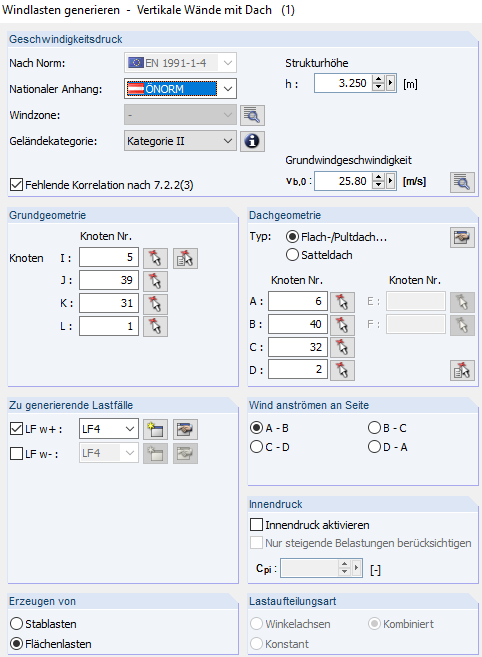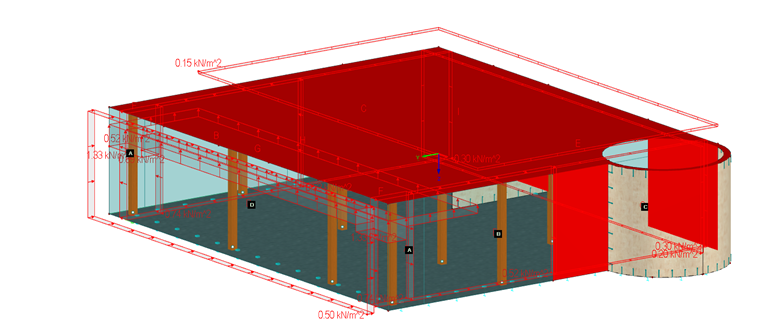No, these are normally not included. Wind load generation via surface loads always determines the wind load that is orthogonal to the spanned surface.
For the attached example, however, Image 02 shows that the loading in the wind load surface amounting to 0.5 kN/m² is relatively easy to convert.
It is also possible to generate the wind load for any building geometry with the new stand-alone program RWIND Simulation. This provides you with the ability to perform wind simulations and generate wind loads. You can use these options optimally in conjunction with the structural FEA software RFEM or the structural frame analysis software RSTAB.
Input
The direct import of models from RFEM or RSTAB allows you to define the relevant parameters for the analyzed wind directions with the height-dependent wind profiles, based on the wind standard. This results in the corresponding load cases with globally defined parameters.
You can also run RWIND Simulation manually without RFEM or RSTAB. Furthermore, it is possible to import the data from STL vector graphics.
The import of the terrain and buildings of the environment into the simulation is also possible from STL files.
By exchanging the data between RFEM or RSTAB and RWIND Simulation, you can easily use the wind analysis results as load cases in the usual RFEM or RSTAB work environment.
Features of RWIND Simulation
- 3D incompressible wind flow analysis with OpenFoam solvers
- Direct model import of RFEM, RSTAB, or STL files
- Simple model changes using drag & drop and graphical adjustment assistance
- Automatic corrections of the model topology with shrink wrap networks
- Option to add objects from the environment (buildings, terrain …)
- Height-dependent velocity profiles according to the standard
- K-epsilon and K-omega turbulence models
- Automatic mesh generation adjusted to the selected depth of detail
- Parallel calculation with optimal utilization of the capacity of multicore computers
- Results in just minutes for low-resolution simulations (up to 1 million cells)
- Results within a few hours for simulations with medium/high resolution (1‑10 million cells)
- Graphical display of results on the Clipper/Slicer planes (scalar and vector fields)
- Graphical display of streamlines and streamline animation

